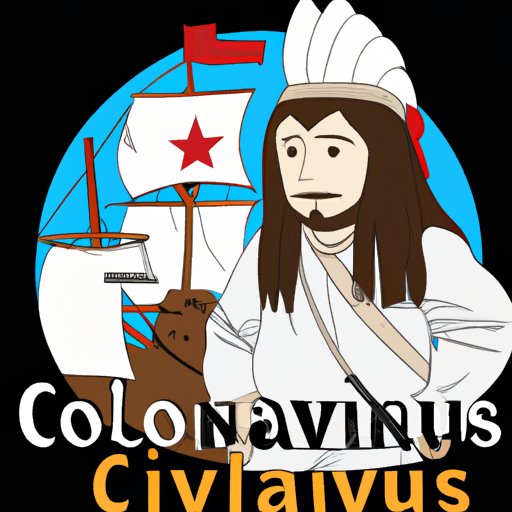Introduction
Christopher Columbus is remembered for his daring voyages across the Atlantic Ocean in the 15th century. He is credited with being the first European to reach the Americas, opening up a new world of discovery and exploration. But how many trips did Columbus make during his lifetime?
In this article, we will explore the details of Columbus’ four main voyages, chart the paths of his cross-Atlantic travels, and examine the number of expeditions he led. We will also discuss the legacy of these journeys and their impact on global exploration and the Native American population.
Exploring the Timeline of Columbus’ Journeys
Columbus made four main voyages during his lifetime. The first began in August 1492 and lasted until March 1493. The second voyage took place from September 1493 to June 1496. The third voyage departed in May 1498 and returned in October 1500. The fourth and final voyage was from May 1502 to November 1504.
Charting Columbus’ Cross-Atlantic Travels
The route of Columbus’ first voyage set sail from Palos de la Frontera in Spain on August 3rd, 1492. He then sailed south along the coast of Europe before crossing the Atlantic Ocean to the Canary Islands. From there, he continued westward and eventually arrived at the Caribbean Islands, which he believed to be India.
The second voyage left from Cádiz, Spain in September 1493. This time, Columbus sailed to the Caribbean and explored the region, including Puerto Rico, Jamaica, and the Virgin Islands. He then returned to Spain in June 1496.
For his third voyage, Columbus departed from Sanlúcar de Barrameda, Spain in May 1498 and headed towards South America. He explored the coasts of present day Venezuela and Trinidad before sailing back to Hispaniola (present day Dominican Republic). He then returned to Spain in October 1500.
On his fourth and final voyage, Columbus left from Cadiz in May 1502 and sailed to the Caribbean once again. He explored the regions of Central America and South America, including Honduras, Panama, and Nicaragua. He returned to Spain in November 1504.
Mapping the Paths of Columbus’ Explorations
During his four voyages, Columbus explored numerous islands in the Caribbean Sea and parts of Central and South America. He visited present day Cuba, Hispaniola, Jamaica, Puerto Rico, Trinidad, and the Virgin Islands. In Central America, he explored parts of Honduras, Nicaragua, Costa Rica, and Panama. In South America, he visited the coasts of what is now Venezuela and Colombia.
Examining the Number of Expeditions Led by Columbus
In total, Columbus made four major voyages between 1492 and 1504. However, he also led several smaller expeditions. These included a trip to the Azores in 1476, a journey to the Cape Verde Islands in 1485, and an expedition to the Portuguese coast in 1488.
In addition, some historians believe that Columbus made a fifth voyage from 1506 to 1508. However, this is disputed as there is no clear evidence to support this claim.
Discovering the Legacy of Columbus’ Voyages
Columbus’ voyages had a profound impact on global exploration and the Native American population. His expeditions led to the “Age of Discovery,” in which Europeans began to explore and colonize other parts of the world.
Unfortunately, Columbus’ explorations also had a devastating effect on the Native American population. Disease, slavery, and warfare caused by European colonization decimated the native population.
Conclusion
Christopher Columbus made four major voyages between 1492 and 1504, exploring the Caribbean Islands, Central America, and South America. Additionally, he may have made one or two smaller expeditions. His voyages opened up the “Age of Discovery” and had a lasting impact on global exploration and the Native American population.
(Note: Is this article not meeting your expectations? Do you have knowledge or insights to share? Unlock new opportunities and expand your reach by joining our authors team. Click Registration to join us and share your expertise with our readers.)
